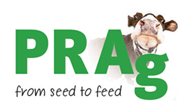When winter hits and grass growth slows, livestock farmers face the challenge of keeping animals healthy, productive, and well-fed. Choosing the right winter livestock feed is crucial — not only to maintain body condition but also to support milk yield and growth rates.
Three of the most effective and economical winter feeds are maize silage, fodder beet, and washed stock potatoes. Together, they form a nutrient-rich, energy-dense combination that can carry cattle, sheep, and dairy herds through the coldest months.
Let’s explore the benefits of maize silage, fodder beet, and washed stock potatoes — and how they can improve your farm’s winter feeding strategy.
🌽 Maize Silage: The High-Energy Cornerstone of Winter Feeding
Maize silage is one of the most reliable and energy-packed forages available for winter feeding. Made by fermenting chopped maize plants, it delivers consistent nutrition and excellent palatability.
✅ Key Benefits of Maize Silage
1. High energy and starch content:
Maize silage provides a concentrated source of slow-release energy, supporting milk production and weight gain in cattle.
2. Reliable winter feed:
Properly ensiled maize maintains its quality and digestibility for months, ensuring a steady feed supply when pastures are bare.
3. Enhances animal performance:
Its sweet, palatable taste encourages higher feed intake, helping livestock maintain body condition throughout winter.
4. Complements other forages:
When mixed with grass silage or hay, maize silage balances fiber, protein, and energy — creating a complete winter ration.
5. High yields per hectare:
Maize offers excellent returns, producing large quantities of high-quality feed from relatively small areas.
🌱 Fodder Beet: The Energy-Rich Winter Root Crop
Fodder beet has gained popularity across the UK, Ireland, and Europe as one of the most nutritious root crops for livestock feeding. Both the bulb and leafy tops can be grazed or lifted for storage.
✅ Benefits of Feeding Fodder Beet
1. Exceptional energy density:
Fodder beet’s high sugar content makes it a superb energy source, supporting milk yields, fertility, and weight gain.
2. Highly digestible and palatable:
Livestock relish fodder beet, often consuming it readily even when other feeds are refused.
3. Complements silage and hay:
When combined with maize silage, fodder beet helps balance energy and dry matter intake for improved rumen health.
4. Cost-effective and high yielding:
Fodder beet can produce 60–80 tonnes per hectare under good conditions, making it a profitable winter crop.
5. Versatile feeding options:
Farmers can graze in situ, chop and feed, or include fodder beet in a total mixed ration (TMR).
⚠️ Feeding advice: Introduce fodder beet slowly to avoid digestive upset. Start with small quantities and increase gradually as animals adapt.
🥔 Washed Stock Potatoes: Sustainable, Starchy Feed for Winter
Washed stock potatoes are an excellent source of starch and energy for cattle and sheep. Often sourced as surplus or byproduct potatoes, they offer an affordable and sustainable winter feed.
✅ Benefits of Stock Potatoes for Livestock
1. Energy-rich and cost-effective:
Potatoes contain high starch levels comparable to cereals, providing a cheap energy boost for finishing cattle or ewes.
2. Supports weight gain and condition:
Adding washed potatoes to rations helps maintain energy levels and overall performance through winter.
3. Reduces feed waste:
Feeding stock potatoes is an environmentally friendly way to repurpose surplus crops that are unsuitable for retail markets.
4. Clean and easy to handle:
Washed potatoes have less soil contamination, making them easier to store and feed safely.
⚠️ Feeding tip: Always crush or chop potatoes before feeding to prevent choking. Avoid feeding green or sprouted potatoes, as they may contain harmful solanine.
🧭 Combining Maize Silage, Fodder Beet, and Potatoes for Balanced Winter Rations
Using these feeds together creates a high-performing, balanced diet that delivers energy, fiber, and nutrients in the right proportions.
| Feed Type | Key Nutrient | Benefit |
|---|---|---|
| Maize Silage | Starch & Fiber | Base forage for energy and rumen health |
| Fodder Beet | Sugars | Boosts energy and intake |
| Washed Potatoes | Starch | Increases energy and palatability |
Example Cattle Ration (Dry Matter Basis)
-
Maize silage: 55%
-
Fodder beet: 20%
-
Washed stock potatoes: 15%
-
Protein/mineral supplement: 10%
(Always adjust ratios based on livestock type and feed analysis.)
🌾 Why This Combination Works
✅ Energy-rich: Helps maintain milk yield and body weight during cold months.
✅ Palatable: Encourages consistent intake even in poor weather.
✅ Economical: Makes efficient use of home-grown and local feed sources.
✅ Sustainable: Reduces food waste through use of surplus potatoes and beet.
🐄 Final Thoughts: Smarter Winter Feeding for Healthier Livestock
The combination of maize silage, fodder beet, and washed stock potatoes provides farmers with a powerful toolkit for winter feeding. These feeds deliver the energy, palatability, and affordability needed to sustain healthy, productive animals through the toughest months of the year.
By planning rations early, testing feed quality, and introducing new ingredients gradually, farmers can reduce costs, improve performance, and keep livestock thriving — all winter long.
Call PRAG 01437 781780 for delivered pricing.



